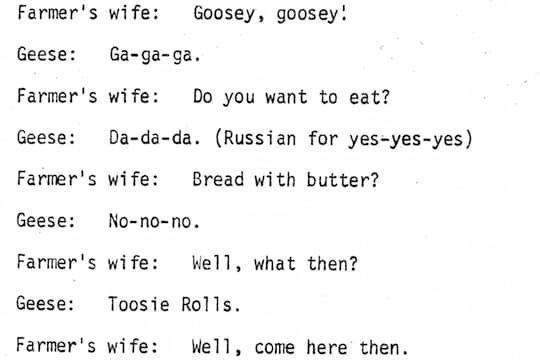
Malayalam Christian Drama Script Pdf
These interactive Christian skits are great for role play, puppets, or simply reading aloud. The children will act out a skit about thankfulness and sacrifice. SKETCH NIGHT, 10 COMEDY SKITS FOR TEENS. This play is fully. Copying or duplication of any part of this script is strictly forbidden.
Southern Brahmic • • • • • • Malayalam • • • • • • • • • • • • • • • • • • • • • • • • • • • • • • This box: view • talk • edit The Malayalam script (: മലയാളലിപി, Malayāḷalipi [?], pronounced [mɐləjaːɭɐ lɪβɪ] ( )) is a script used commonly to write the —which is the principal language of the state of, spoken by 36 million people in the world. Like many other Indic scripts, it is an, or a writing system that is partially “alphabetic” and partially syllable-based. The modern Malayalam alphabet has 13 vowel letters, 36 consonant letters, and a few other symbols., which actually means two individual languages (: knn and gom), is also sometimes written in the Malayalam script, though relatively rarely. The script is also used to write several minority languages such as,, and Ravula. On the other hand, Malayalam was historically written in several different scripts. Even today it is sometimes written in, a variant form of the, mainly by in.
History The was first written in, an ancient script for. However, modern Malayalam script evolved from, a script originally used to write. Both Vatteluttu and Grantha evolved from, but independently. Vatteluttu (: വട്ടെഴുത്ത്, Vaṭṭeḻuttŭ [?], “round writing”) is a script that had evolved from, and was once used extensively in the southern part of present-day and in. Malayalam was first written in Vatteluttu. The inscription issued by is the earliest example, dating from about 830 CE. In the Tamil country, the modern had supplanted Vatteluttu by the 15th century, but in the region, Vatteluttu remained in general use up to the 17th century, or the 18th century.
A variant form of this script,, was used until about the 19th century mainly in the and in the Malabar area. Another variant form,, was used in the south of. Vowels Vowel letters and vowel signs The following tables show the independent vowel letters and the corresponding dependent vowel signs (diacritics) of the Malayalam script, with romanizations in, pronunciations in the (IPA), and CHARACTER NAMES, abbreviated for simplicity ( VS = VOWEL SIGN, VOC = VOCALIC). Long Independent Dependent Indep. A school sign. Notice the word-initial a അ in akkādami, and the vowel sign ē േ in Kēraḷa. Obrazec zayavleniya o zaprose pensionnogo dela.
R̥, r̥̄, l̥, l̥̄, used to write words, are treated as vowels. They are phonetically not vowels in Malayalam or in Classical Sanskrit, but originally they were (see and ).
The letters and signs for r̥̄, l̥, l̥̄ are very rare, and are not considered as part of the modern orthography. The vowel signs ā, i, ī are placed to the right of a consonant letter to which it is attached. The vowel signs e, ē, ai are placed to the left of a consonant letter. The vowel signs o and ō consist of two parts: the first part goes to the left of a consonant letter and the second part goes to the right of it. In the reformed orthography, the vowel signs u, ū, r̥ are simply placed to the right of the consonant letter, while they often make consonant-vowel ligatures in the traditional orthography.

Independent Dependent Vowel sign Example ai ഐ ai /ai̯/ AI ൈ VOWEL SIGN AI പൈ pai /pai̯/ PA + VOWEL SIGN AI au ഔ au /au̯/ AU ൌ (archaic) VOWEL SIGN AU പൌ pau /pau̯/ PA + VOWEL SIGN AU ൗ (modern) AU LENGTH MARK പൗ pau /pau̯/ PA + AU LENGTH MARK It is important to note the vowel duration as it can be used to differentiate words that would otherwise be the same. For example, /kalam/ means 'earthenware pot' while /kaalam/ means 'time' or 'season'. Anusvaram Anusvara aṁ അം aṁ /am/ A + ANUSVARA ം ṁ /m/ ANUSVARA പം paṁ /pam/ PA + ANUSVARA An anusvaram ( അനുസ്വാരം, anusvāram), or an, originally denoted the where the preceding vowel was changed into a, and hence is traditionally treated as a kind of vowel sign. In Malayalam, however, it simply represents a consonant /m/ after a vowel, though this /m/ may be to another. It is a special consonant, different from a consonant represented by a “normal” consonant letter in that it is never followed by an inherent vowel or another vowel. In general, an anusvara at the end of a word is transliterated as ṁ in, but a Malayalam anusvara at the end of a word is transliterated as m without a dot.
Visargam visarga aḥ അഃ aḥ /ah/ A + VISARGA ഃ ḥ /h/ VISARGA പഃ paḥ /pah/ PA + VISARGA A visargam ( വിസർഗം, visargam), or a, represents a consonant /h/ after a vowel, and is transliterated as ḥ. Like an anusvara, it is a special symbol, and this /h/ is never followed by an inherent vowel or another vowel.
See also: A chillu, or a chillaksharam ( ചില്ലക്ഷരം, cillakṣaram), is a special consonant letter that represents a pure consonant independently, without help of a. Unlike a consonant represented by an ordinary consonant letter, this consonant is never followed by an inherent vowel. And fit this definition but are not usually included. ISCII and Unicode 5.0 treat a chillu as a glyph variant of a normal (“base”) consonant letter. In Unicode 5.1 and later, however, chillu letters are treated as independent characters, encoded atomically. There are at least six known chillu letters. Chillu-k is rare.